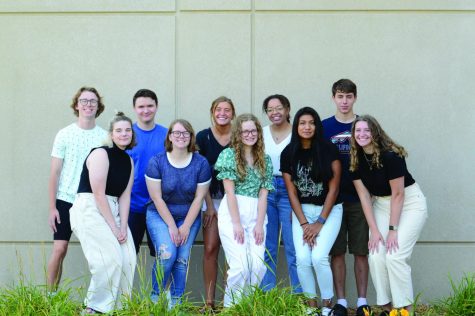Issue: The importance of voting in local elections
September 30, 2020
This is a very crucial time in politics. No matter what party you belong to or where you are from, it is so important now more than ever to have your voice heard, starting with your state and local elections. First thing’s first: there should be a clear understanding about how local government works and how it ultimately affects the bigger picture as it pertains to the White House.
When Americans cast their vote for president, they are actually directing other people, “electors,” who then cast their votes for the presidential and vice presidential candidates that receive the most votes in their state. After that, the vote for the winning candidates is sent to the state capitol and the Electoral College and its members vote for South Dakota based on these results.
South Dakota, according to the South Dakota Secretary of State, gets three electoral votes in the presidential election.
For local government in South Dakota though, the amount of actual voters in the state vs. the number of elected officials, and those sending in these votes, is disproportionate. CBS News reported that 44% of South Dakota voters are conservative; however, the South Dakota Legislative Research Council (SDLRC) notes that 80% of our legislators are Republican. To put that in perspective, the South Dakota Legislature has 107 voting members, and 91 of them are Republicans, despite the fact that the majority of voters in the state do not align with this party.
When it comes to representation in our local government, it is important to not only have people who have your best interests at heart, but diverse people who look and think like the citizens they’re representing. These types of candidates truly care about citizens’ issues and concerns. The current leaders of South Dakota, like many other states, do not represent the wide variety of South Dakota residents. According to the U.S. Census Bureau, approximately 49.8% of the South Dakota population is female; however, there are only 25 women out of 105 members of the state legislature. There is also only one Black man and five Indigenous people, disproportionate to the many minority populations in South Dakota.
Additionally, since the South Dakota Set Term Limits Amendment in 1992, legislators are limited to a maximum of four consecutive terms, or eight years, in the same legislature. However, some argue that this is not strict enough, because many politicians are just moving to a different part of the legislature or taking two years off before running again. This also contributes to older representatives who do not necessarily speak for the interests of young people.
This election is truly making headlines in ways past elections have not. Between the demand for Trump’s tax returns, to the replacing of RBG with Republican Amy Coney Bennett, this is a time to really be loud and stand up for change. Speak up in the best way you possibly can, by exercising your right as an American citizen and going out on Nov. 3 and voting. Not just for a president, but for your local legislative representatives. Because remember, all elections matter.

























